Most Read in This Section
-
Nov. 5, 2024
-
-
-
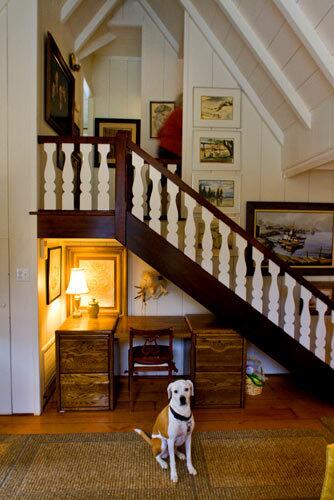
By Frank Nelson
They are called the Moody cottages, about three dozen pixie homes built in the 1930s and ‘40s in the Santa Barbara area by sisters Harriet, Mildred, Brenda and Wilma Moody. With ceilings slanted to an extreme, windows irregularly sized and rooms configured in odd shapes, the homes are whimsical -- if now downright eccentric. But as Moody cottage owner Christine Hoehner attests, what the cottages lack in size they make up for in history, character, magic and charm. Here, Hoehner climbs the storybook stairs while her dog, Emily Dickinson, sticks around for her photo op. (Ricardo DeAratanha / Los Angeles Times)
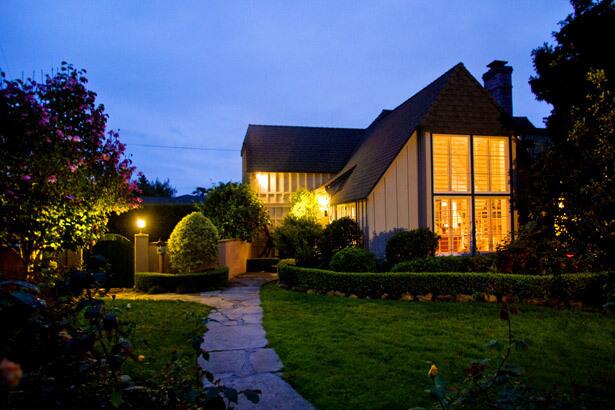
Hoehner bought her two-bedroom, 1,200-square-foot Moody cottage about five years ago. “It’s not linear, not sophisticated,” she says. “But it is charming and cozy, very homey and very comfy. I like ‘English’ and I like gardening. And I love lots of nooks and crannies.” Inside, she has plenty ... (Ricardo DeAratanha / Los Angeles Times)
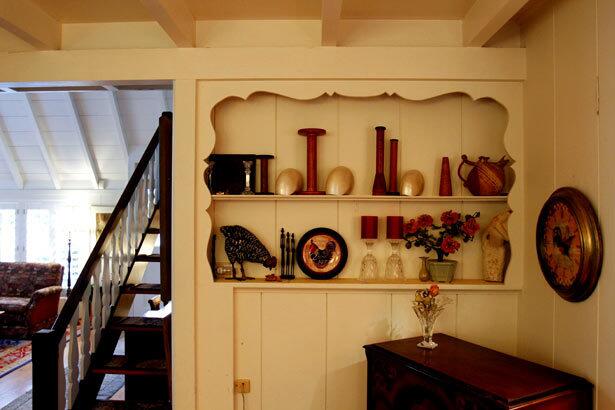
Built-in bookcases and display nooks can be found throughout Hoehner’s cottage. Born in the 1890s, the Moody sisters pioneered a style of property development that was ahead of its time. By combining their varied training and talents, they provided a complete package: Between them they could design and engineer the cottage, arrange financing, navigate planning issues, handle real estate transactions and decorate interiors. (Ricardo DeAratanha / Los Angeles Times)
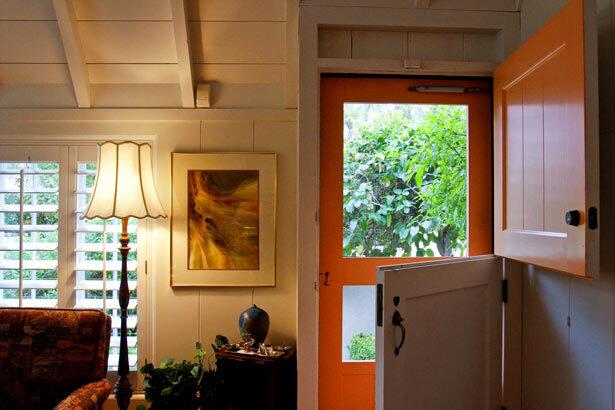
A Dutch door opens onto Hoehner’s living room. The Moody sisters made full use of windows, beams, doors and other house parts salvaged from large homes being torn down after the Depression to save on property taxes. These recycling efforts only lent their already fanciful creations another charmingly random dimension. (Ricardo DeAratanha / Los Angeles Times)
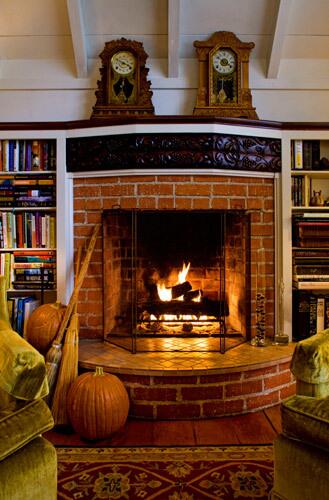
Today these cottages -- mere dollhouses when compared with Montecito mansions -- continue to command serious money. Three Moody cottages on the market recently were listed at $1,695,000 to $2,595,000, putting their price per square foot about 20% higher than the average 2009 per-square-foot sales price for other properties in the same ZIP Code. Pictured here: Hoehner’s fireplace, part of the home’s original design. (Ricardo DeAratanha / Los Angeles Times)
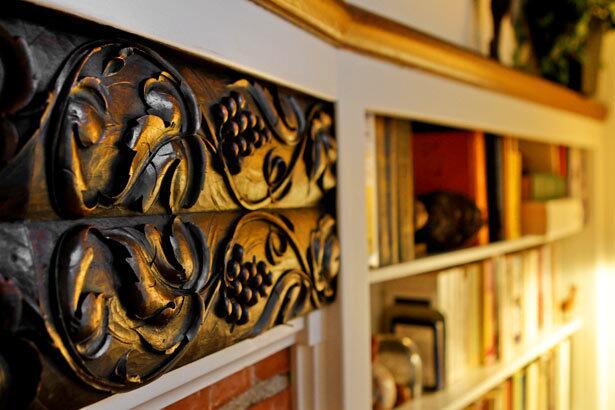
Detail of the fireplace’s wood carving. (Ricardo DeAratanha / Los Angeles Times)
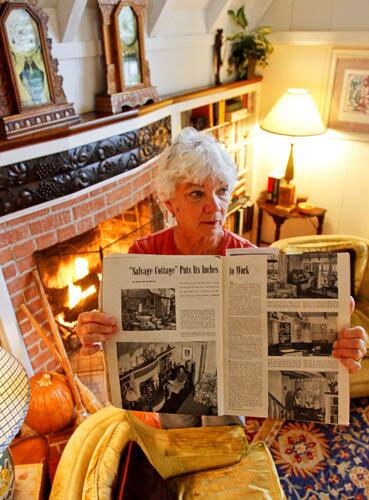
Hoehner holds an old Better Homes and Gardens magazine showing a photo spread on her house. (Ricardo DeAratanha / Los Angeles Times)
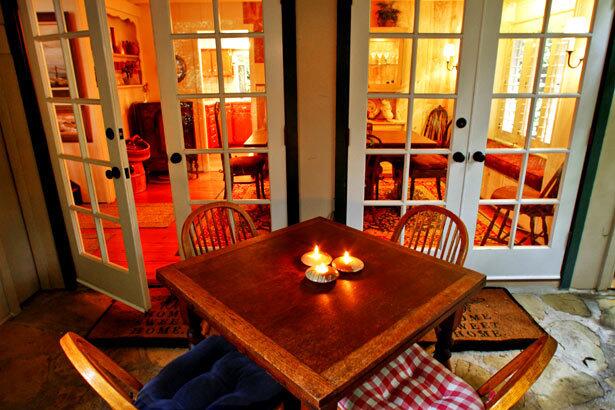
The veranda in the foreground, and beyond the French doors, the dining room. (Ricardo DeAratanha / Los Angeles Times)
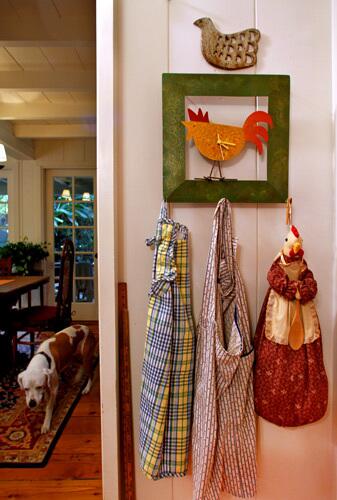
Cottage style, in full effect. (Ricardo DeAratanha / Los Angeles Times)
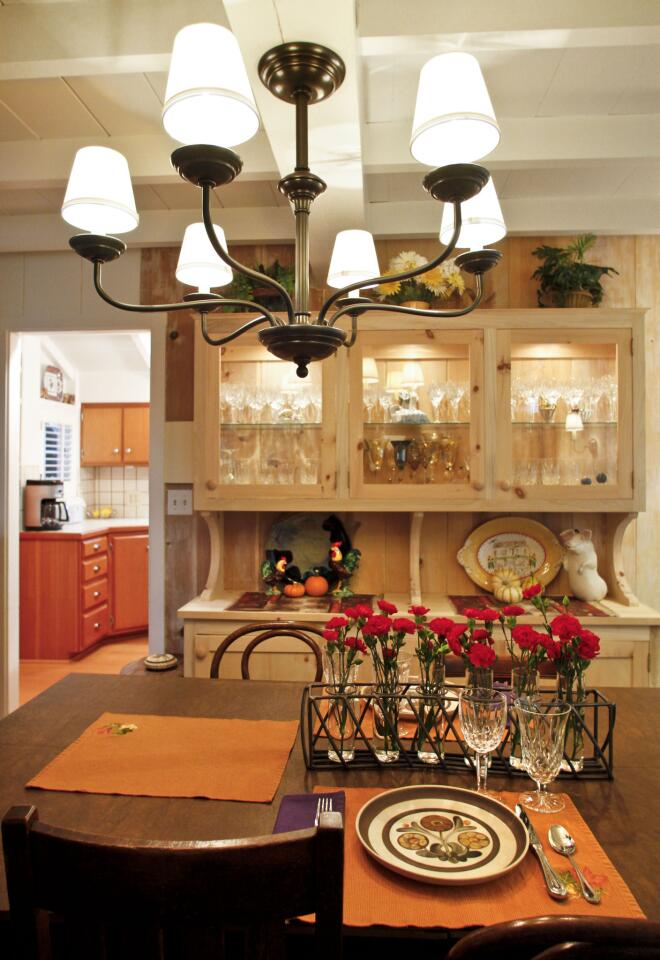
The dining room. (Ricardo DeAratanha / Los Angeles Times)
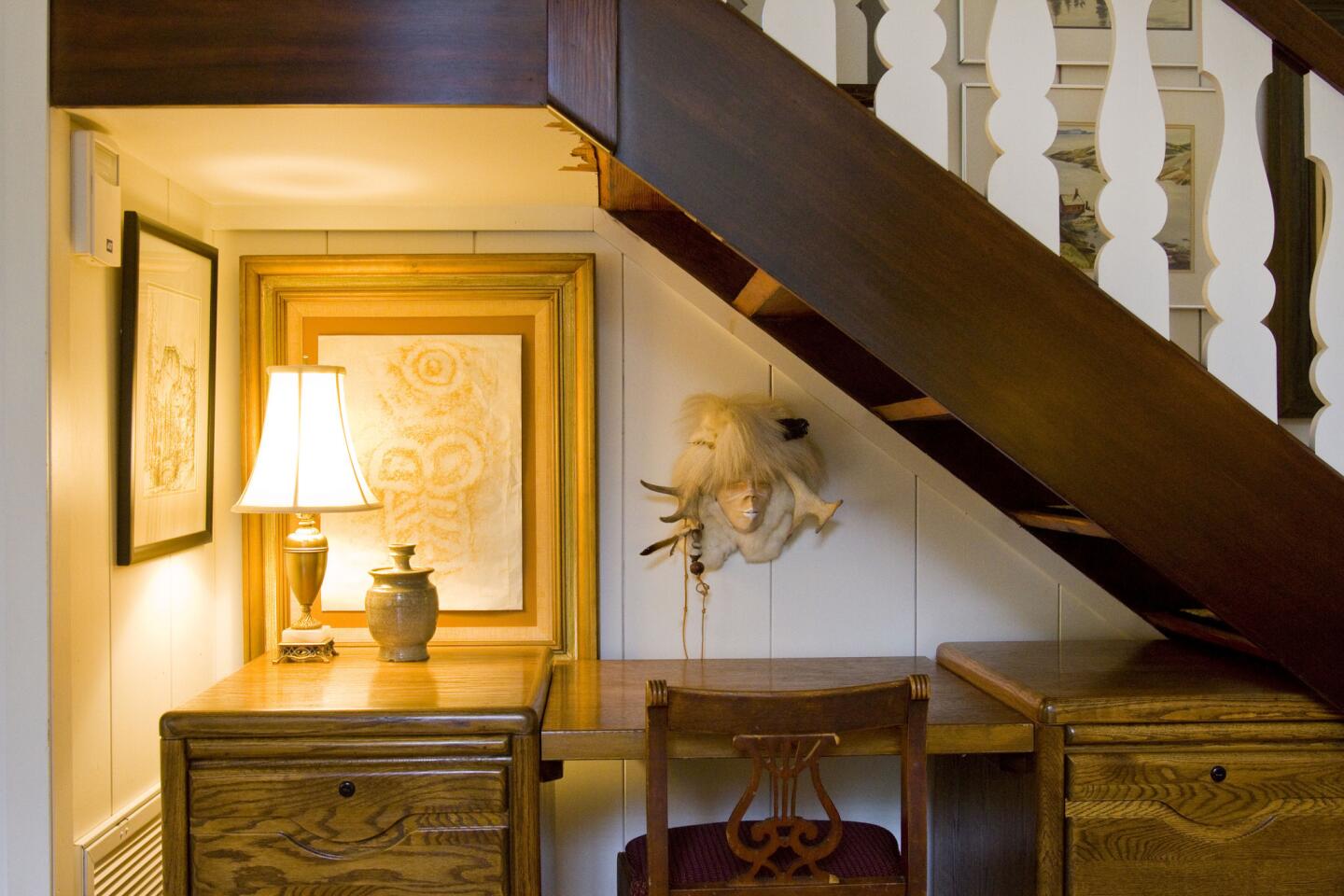
A nook under the stairs put to good use. (Ricardo DeAratanha / Los Angeles Times)
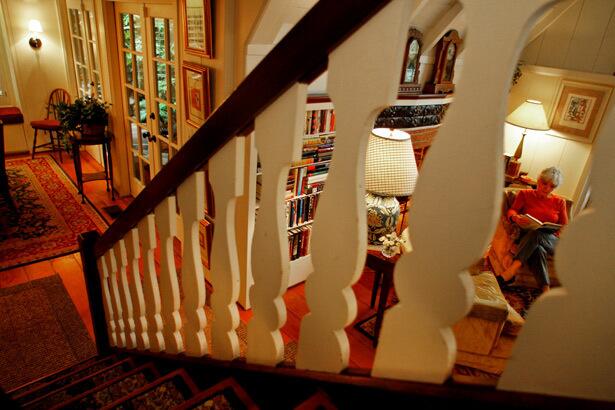
Looking down to the living room through the period balusters. (Ricardo DeAratanha / Los Angeles Times)
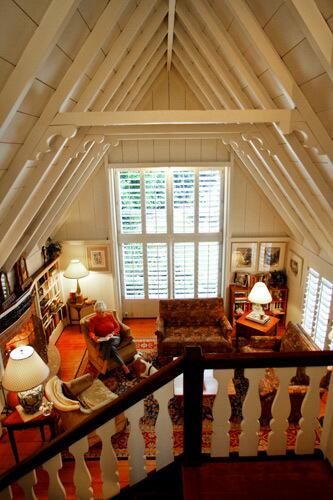
A small house, yet bright, open and airy. (Ricardo DeAratanha / Los Angeles Times)
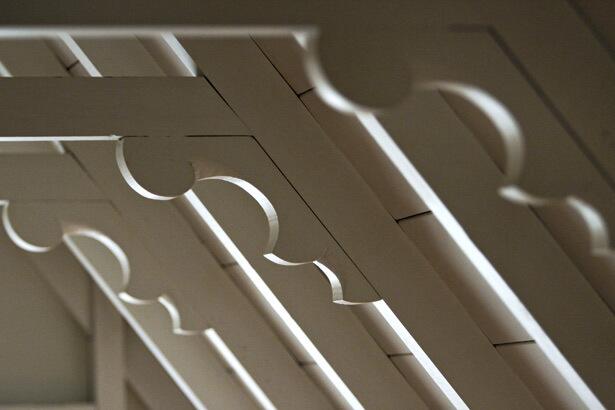
Architectural decoration in almost every corner of the house. (Ricardo DeAratanha / Los Angeles Times)
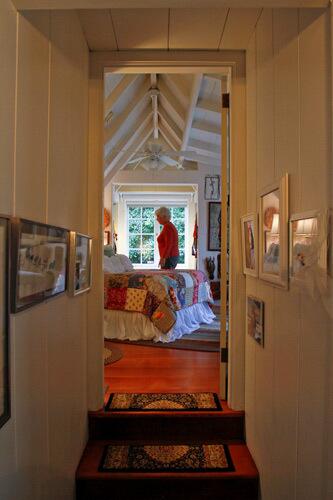
Christine Hoehner circles her bed, reached through a narrow passage and set under an asymmetric ceiling. (Ricardo DeAratanha / Los Angeles Times)
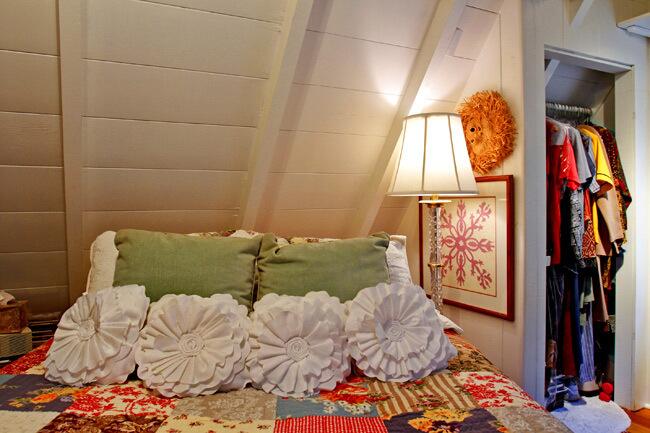
Watch your head -- and don’t expect walk-in closets. (Ricardo DeAratanha / Los Angeles Times)
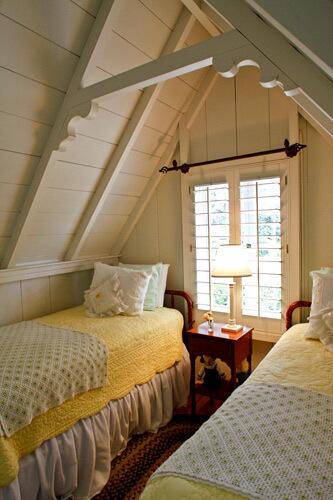
Guest room. (Ricardo DeAratanha / Los Angeles Times)
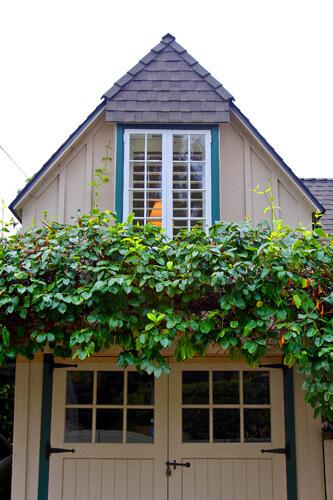
The guest room sits above the garage. (Ricardo DeAratanha / Los Angeles Times)
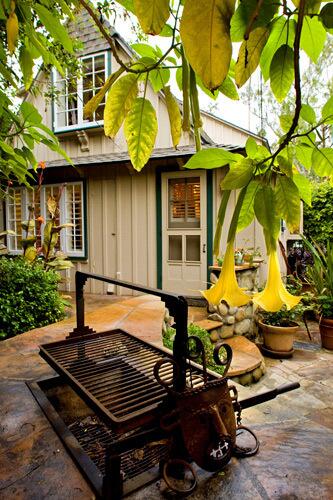
The backyard barbecue and ... (Ricardo DeAratanha / Los Angeles Times)
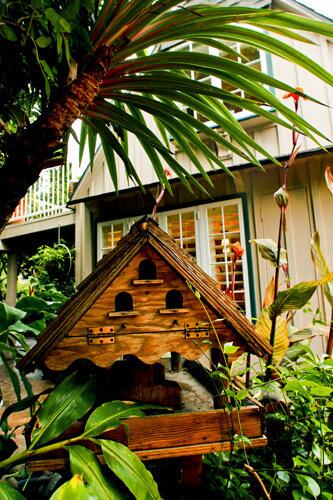
Birdhouse. (Ricardo DeAratanha / Los Angeles Times)
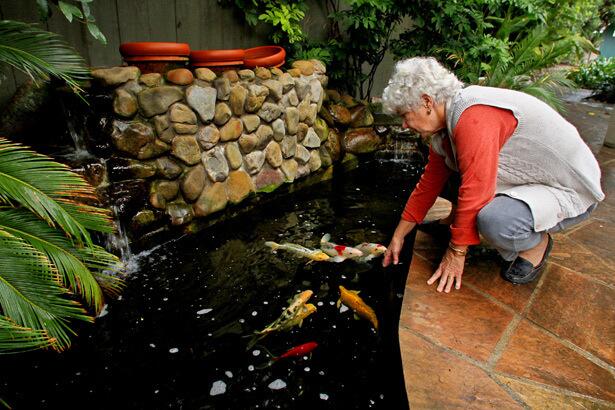
Hoehner crouches for a closer look at her pond. (Ricardo DeAratanha / Los Angeles Times)
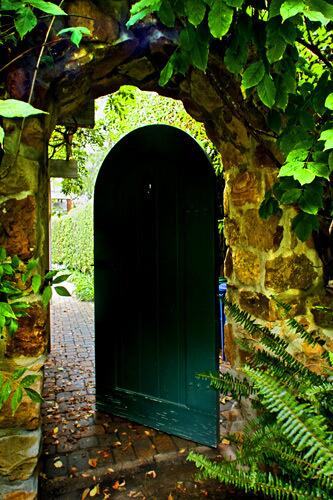
What kind of person buys a Moody cottage? People with the “whimsy gene,” according to Brook Ashley of Prudential California Realty in Montecito. “There’s an element of magic in what the Moody sisters did, a little bit of whimsy in each home. People fall in love with these places and treasure them.”
Here, Hoehner’s garden gate. For a look at another Moody cottage, keep clicking ... (Ricardo DeAratanha / Los Angeles Times)
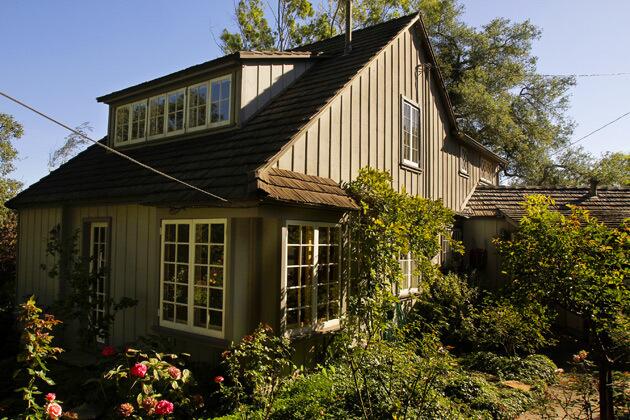
Larry and Donna Mason smile like indulgent parents as they recount a litany of what Larry calls “unexpected architectural features” but what others might consider faults in their historic Montecito cottage: Two doors on the narrow upstairs landing open into each other. A beam at the top of the stairs is too low, as Larry knows from painful experience. Built-in shelves are set too close together for many books to stand upright. But the Masons love their house. (Anne Cusack / Los Angeles Times)
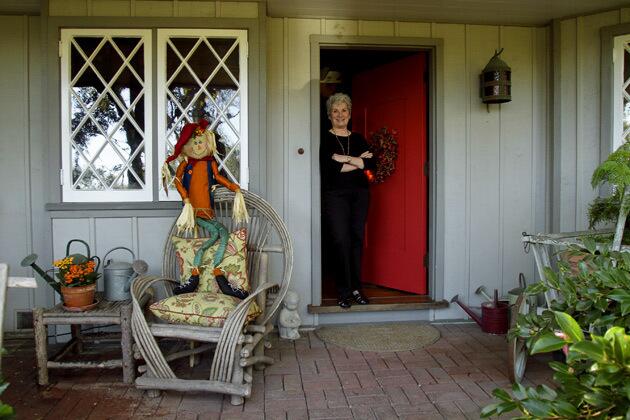
Donna Mason waits by the entrance. The three-bedroom home stands on about a third of an acre with a distant ocean view. In 1976, they instantly fell in love with the cottage, made an offer and paid what they felt was a high price then: $112,000. (Anne Cusack / Los Angeles Times)
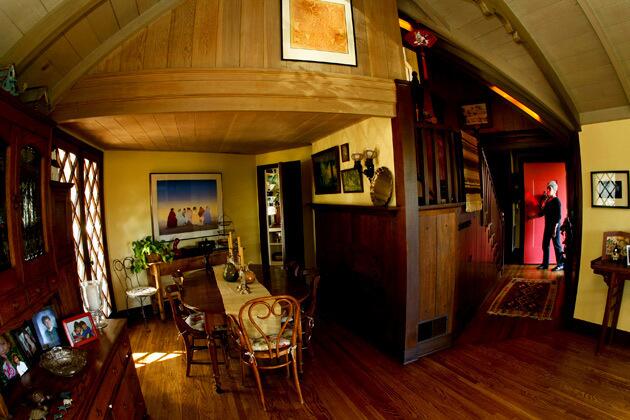
The front door opens into a hallway with steeply angled ceiling. The dining area, by contrast, has a low ceiling constructed of fir. The effect: warm and cozy. (Anne Cusack / Los Angeles Times)
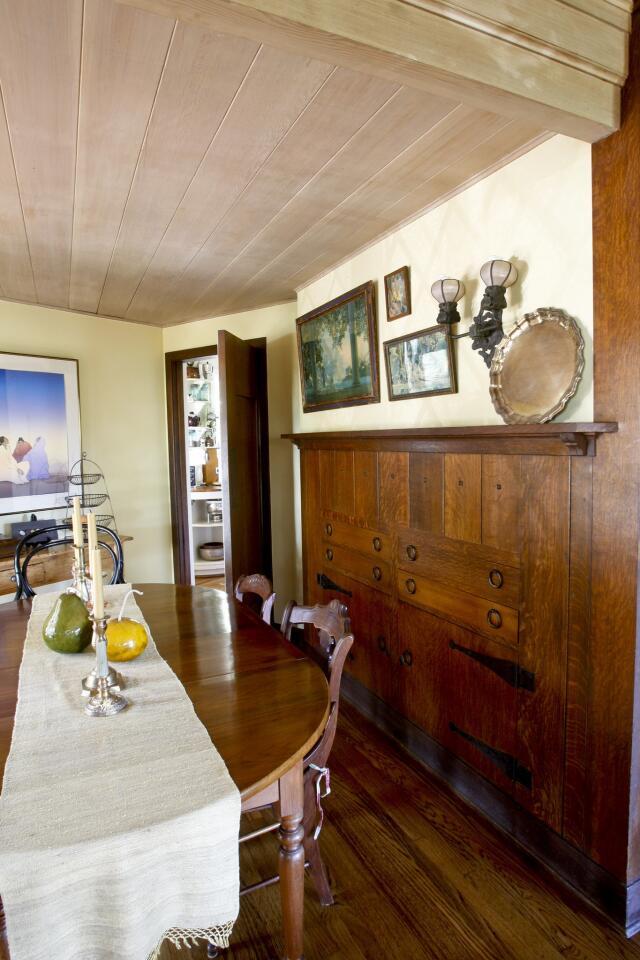
Oak cabinets are built into the dining area’s walls. (Anne Cusack / Los Angeles Times)
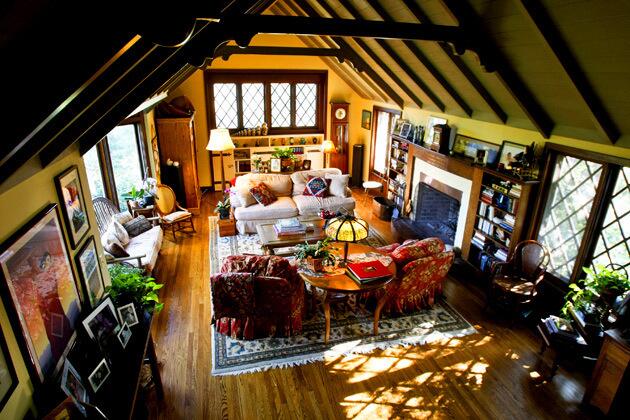
The Masons’ living room feels anything but small. With names such as Hollyhock, Sweetbriar and Greencote, Moody cottages seem straight out of an English fairy tale. Several still contain the Moodys’ signature glass jars of pins and needles, often cemented into the hearth, that were said to ward off mischievous fairies. (Anne Cusack / Los Angeles Times)
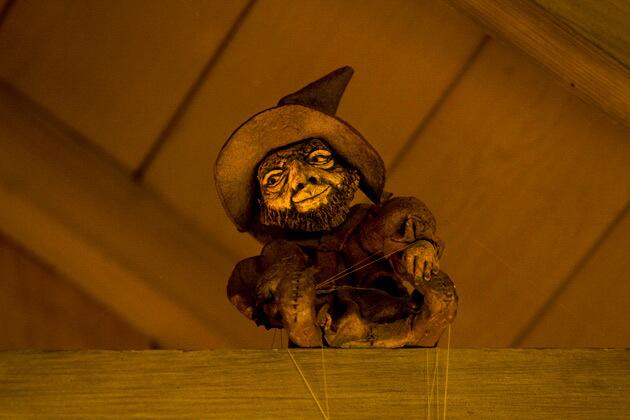
For good luck, the Masons opted for a gnome perched on a living room beam. (Anne Cusack / Los Angeles Times)
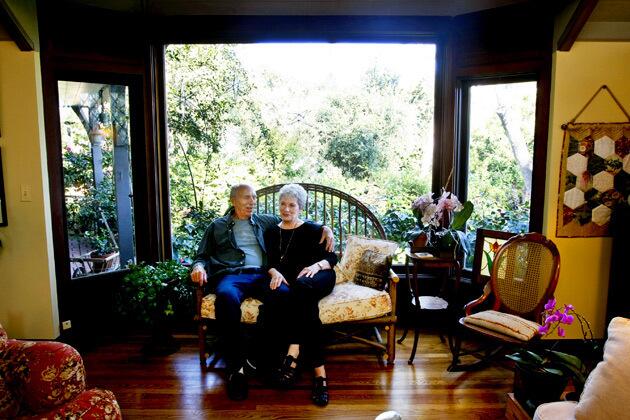
Larry and Donna Mason in their living room, whose picture window is original to the house. (Anne Cusack / Los Angeles Times)
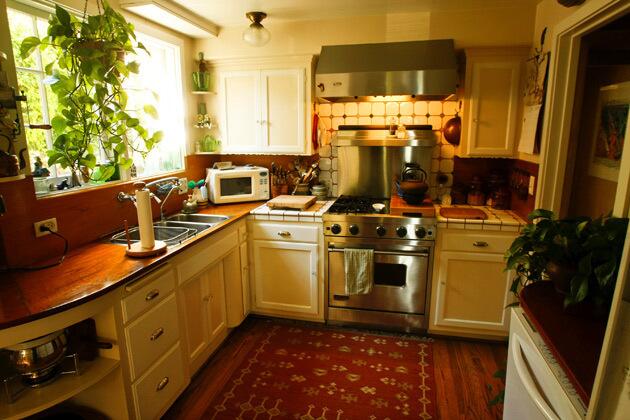
The kitchen still has its original mahogany counters too. (Anne Cusack / Los Angeles Times)
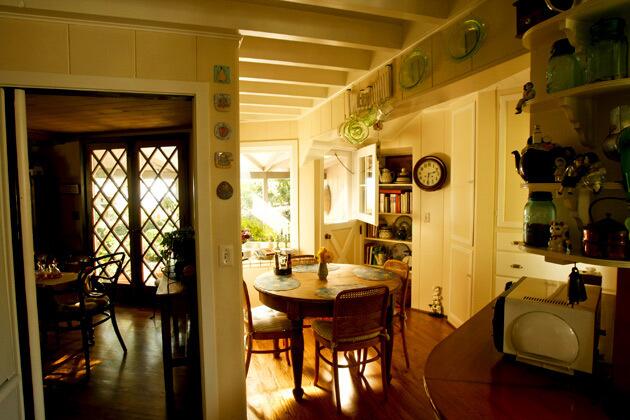
The reverse view: breakfast nook to the right, dining room to the left. (Anne Cusack / Los Angeles Times)
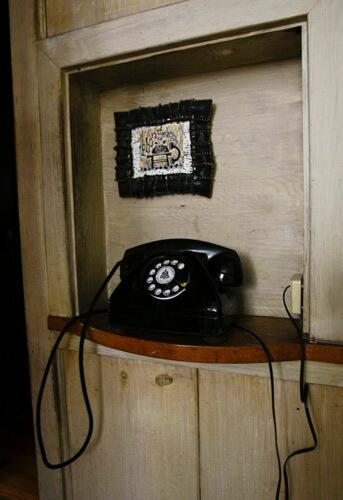
Yes, the vintage phone works. (Anne Cusack / Los Angeles Times)
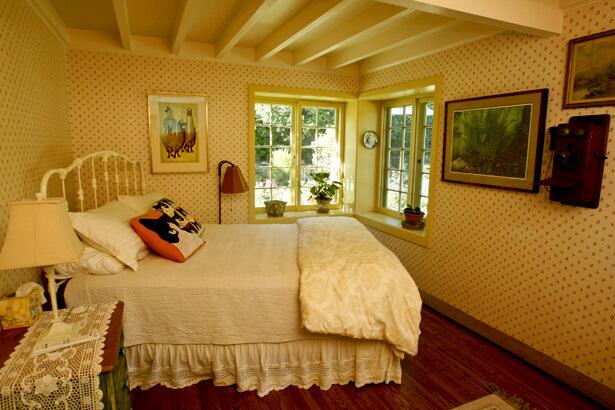
One bedroom is downstairs. (Anne Cusack / Los Angeles Times)
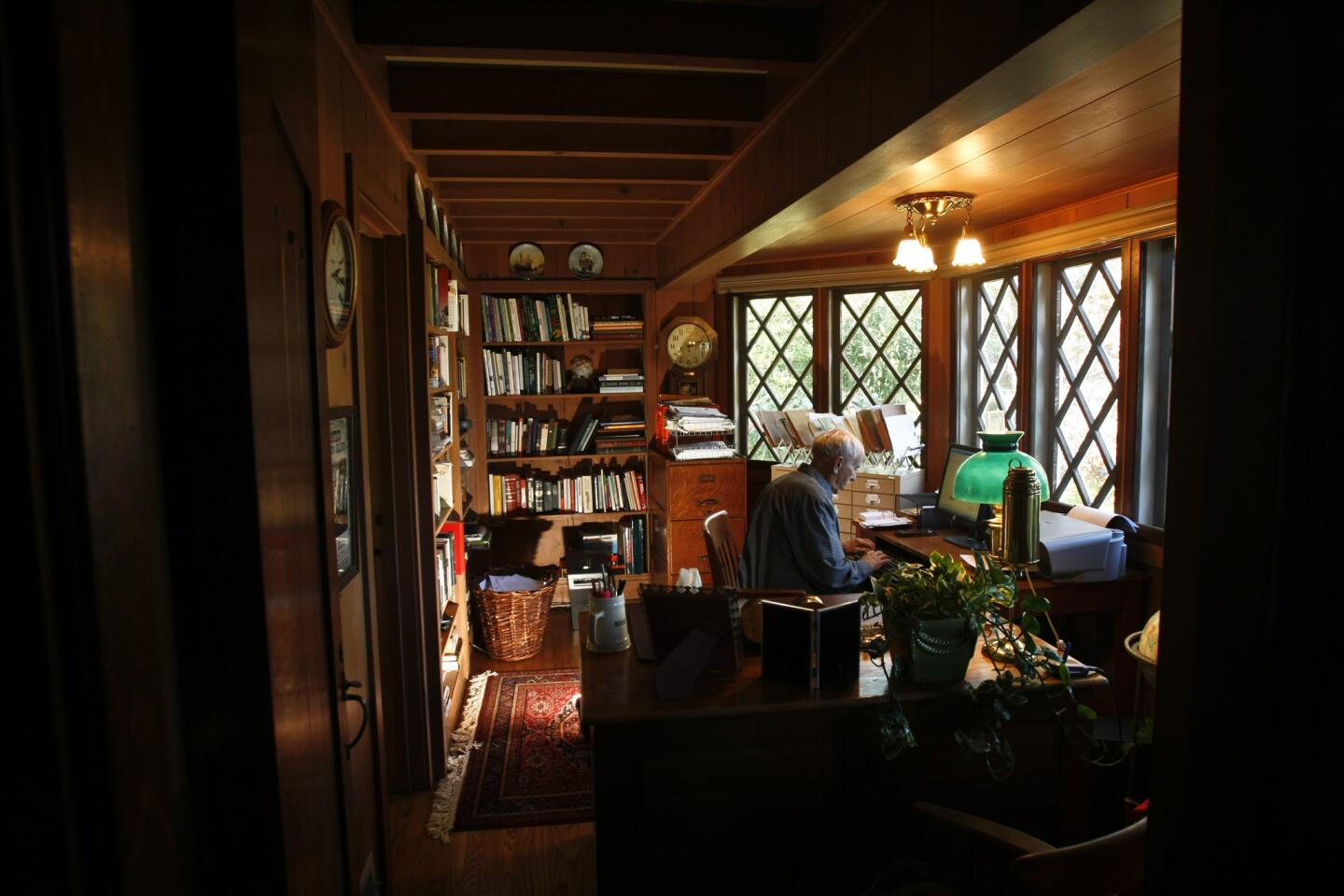
Larry Mason works in the home office, which is off the first-floor bedroom. (Anne Cusack / Los Angeles Times)
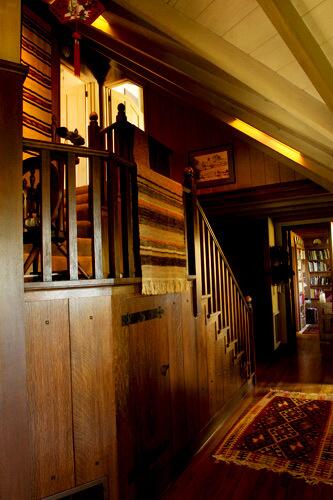
The staircase is oak, the ceiling fir. Both types of wood were salvaged from other homes in the area that were being torn down after the Depression. (Anne Cusack / Los Angeles Times)
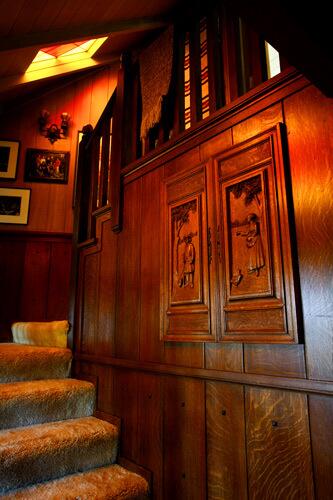
The carved oak panels date to the building of the house. (Anne Cusack / Los Angeles Times)
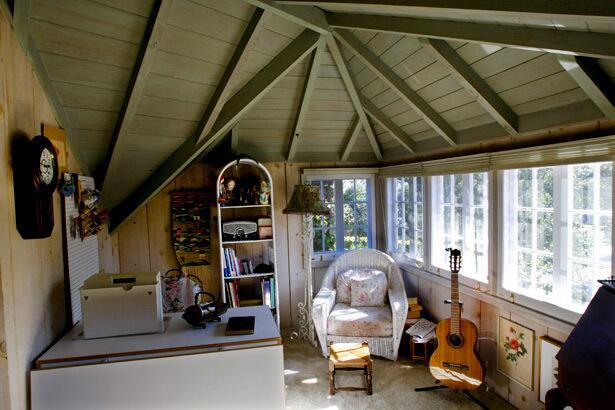
An upstairs bedrooms is bathed in natural light. The ceiling is pickled pine. (Anne Cusack / Los Angeles Times)
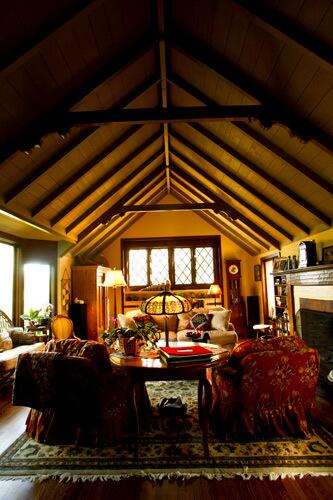
Back downstairs: another view of the living room. (Anne Cusack / Los Angeles Times)
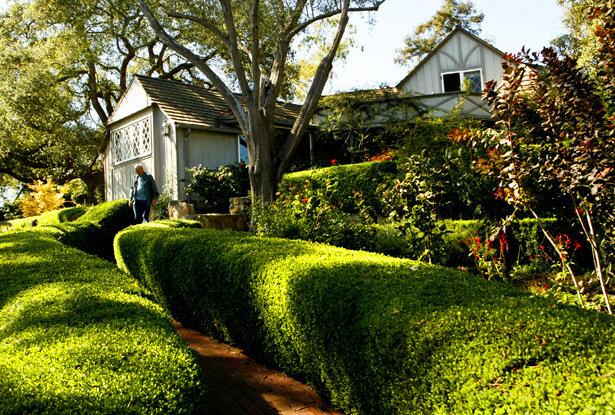
A winding hedge leads from the house back to the street. Builders today couldn’t reproduce Moody cottages even if they wanted to; low headroom, narrow stairways and other eccentricities would run afoul of building codes, says Brian Hofer, an architect and past president of the Architectural Foundation of Santa Barbara. He once rented a Moody cottage for about a year. He says the homes may be inefficient, but that’s the point. Moody cottages, Hofer says, make “the efficient house look kind of boring.”
More tours: Home photo galleries
West Coast scene: L.A. at Home blog (Anne Cusack / Los Angeles Times)
Nov. 5, 2024